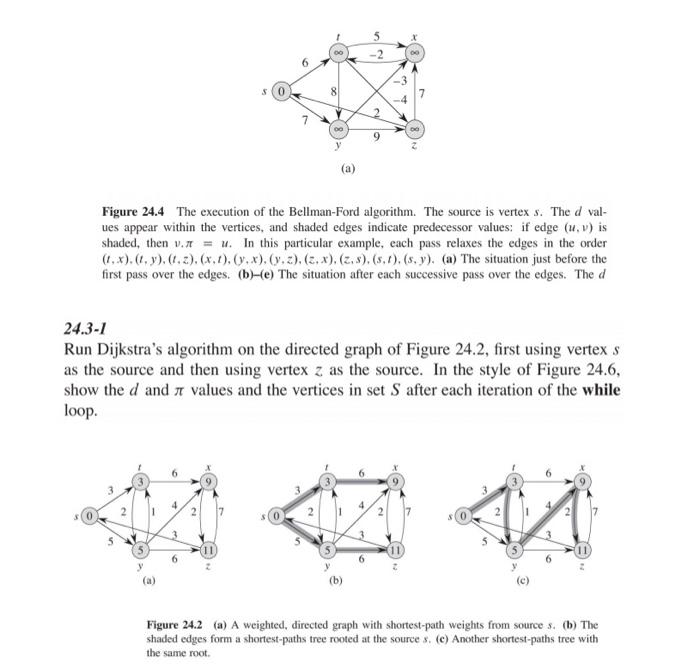Answered step by step
Verified Expert Solution
Question
1 Approved Answer
. 6 oc 4 7 00 9 Figure 24.4 The execution of the Bellman-Ford algorithm. The source is vertex s. The d val- ues appear

Step by Step Solution
There are 3 Steps involved in it
Step: 1

Get Instant Access to Expert-Tailored Solutions
See step-by-step solutions with expert insights and AI powered tools for academic success
Step: 2

Step: 3

Ace Your Homework with AI
Get the answers you need in no time with our AI-driven, step-by-step assistance
Get Started


